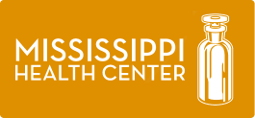Platelet-rich plasma (PRP) injections use a patient’s own concentrated platelets and growth factors to accelerate the healing of injured tendons, ligaments, muscles and joints. It is a form of regenerative medicine that uses the patient’s own healing system to treat many types of musculoskeletal pain and pathology.
PRP is prepared by drawing tubes of your blood and running it through a centrifuge to concentrate the platelets. These activated platelets are then injected directly into your injured body tissue. This releases growth factors that stimulate and increase the number of reparative cells your body produces.
PRP rationale and procedure:
Both platelets and growth factors are essential for cell recruitment and specialization required in healing tissue. In order to heal from an injury, the body needs to rebuild damaged connective tissue and collagen. PRP can be directed to the precise area that requires treatment to promote tissue regeneration.
“I received PRP for a foot injury that wouldn’t heal. After the first treatment, my pain was relieved and I started walking without a limp for the first time in 6 months. With subsequent sessions, I have returned to an active lifestyle and am grateful it saved me from going down the path of surgery.”C.M on 6/18/20
Ultrasound imaging is used to visualize the affected area as well as guide injections. The above photograph shows Dr. Ilsley imaging the lumbar and sacroiliac area before treatment. The photograph below illustrates a lower right cervical vertebra as well as the location of the deep cervical artery to be avoided just before injection.
Dr. Ilsley uses a combination of orthopedic testing and imaging such as MRI, x ray or ultrasound to diagnose the location and extent of injury. Ultrasound, which produces images in real time using sound waves, will typically be used to guide PRP injections to the correct site for increased accuracy. Ultrasound guidance has the additional advantage of visualizing nerves and arteries thereby decreasing the potential for injury during the treatment.
“I’m so happy with the results of my PRP therapy. I’ve noticed a significant reduction in my knee pain after just one session. I can’t wait for my next treatment!”-N.C. on 5/18/20
3 treatments are almost always recommended and ideally separated by about 3-4 weeks apart. More treatments may be given in cases of more severe injury. Plan on spending about $1700 to $2100 for a package of 3 treatments.
Following the injections it is important to avoid excessive usage of the treated area for a short period of time before beginning a rehabilitation program. In some cases, wearing a brace after treatment for several days may be necessary to encourage correct alignment during tissue repair.
Is PRP treatment effective?
There are many studies supporting that PRP treatments improve healing in soft tissue and joint injury. Especially promising results have been seen when PRP treatment is used for chronic tendon and ligament conditions as well as joint instability, such as sacroiliac pain or neck whiplash common after auto injuries.
See these relevant studies below:
Sonographic findings during and after Platelet Rich Plasma injections in tendons, 2014
https://www.ncbi.nlm.nih.gov/pmc/articles/PMC4049646/
MRI Changes After Platelet Rich Plasma Injection in Knee Osteoarthritis (Randomized Clinical Trial), 2020
https://www.ncbi.nlm.nih.gov/pmc/articles/PMC6959502/
Treatment of Partial Rotator Cuff Tear with Ultrasound-guided Platelet-rich Plasma, 2017.
https://www.ncbi.nlm.nih.gov/pmc/articles/PMC5582534/
Ultrasound-guided injection of platelet rich plasma versus corticosteroid for treatment of rotator cuff tendinopathy: 2019
https://www.sciencedirect.com/science/article/pii/S1110116418300899
Platelet-rich plasma to treat ankle cartilage pathology – from translational potential to clinical evidence: a systematic review, 2015
https://www.ncbi.nlm.nih.gov/pmc/articles/PMC4546066/
Distribution of Platelet-rich Plasma after Ultrasound-Guided Injection for Chronic Elbow Tendinopathies, 2017
https://www.ncbi.nlm.nih.gov/pmc/articles/PMC5358018/
Case series of ultrasound-guided platelet-rich plasma injections for sacroiliac joint dysfunction, 2017
https://www.ncbi.nlm.nih.gov/pubmed/27392848
A comparison of ultrasound guided PRP injection and prolotherapy for mechanical dysfunction of the sacroiliac joint, 2019
Getprolo.com has a good resource page showing the results of PRP treatment on numerous pathologies.
https://www.getprolo.com/prolonews/
“In 2017 I damaged both my knees in a motorcycle accident. When Justin gave me the opportunity to repair my knees without invasive surgery, I jumped at the chance. Each session took years of pain off of my knees. I now live pain free :)”
– BV, May 2020

